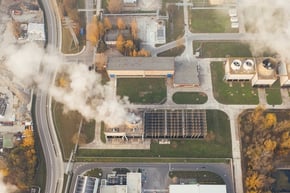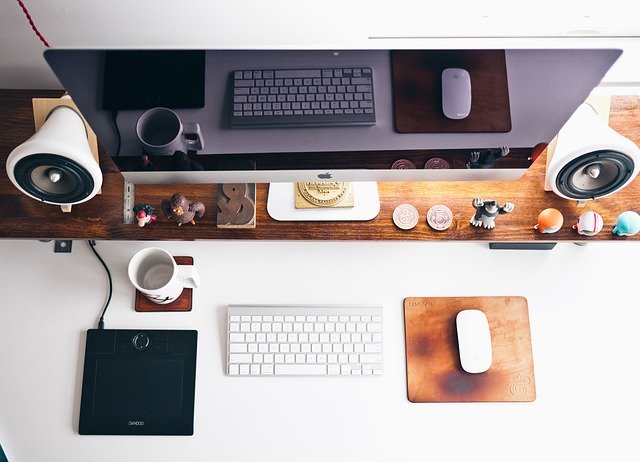
In this time of global crisis, it can be hard to cope with some of the new realities we’re all being faced with, whether it’s experiencing isolation due to social distancing, fearing for yourself or loved ones, or dealing with the virus’ economic impact. As a business that strives to engineer a future where buildings are better for people and planet, we can’t help but notice the ways this crisis reflects global warming’s looming themes: it’s going to affect everyone, it has dangerous consequences, and it takes a global effort to combat. While I only have the emotional bandwidth for one global emergency at a time, the environment is still in the back of my mind, and I can’t help but think of the ways the virus and our environment are inextricably linked.
Our Temporary Footprint

Under extremely unfortunate circumstances, we’re currently able to get a glimpse of what the world might look like if we achieved a global movement towards emissions reductions and generally started living more softly upon the earth. Numerous examples from clearing waters to noticeably lower nitrous oxide emissions indicate our response to the coronavirus outbreak is the type of urgent and unified response we need to effectively combat climate change.
How Can We Make a Difference?

While we won’t venture to solve the world’s biggest challenge in this short blog post, we can offer some recommendations for conserving energy during this pandemic. Being self-proclaimed building energy nerds here at Cx Associates, we hate to see energy wasted, which is why we’ve gone into our closed office and turned down our thermostat, unplugged any unnecessary equipment (no, that fridge doesn’t have to stay on to keep expired leftovers cold, just take them home or throw them out), and turned the lights off. If you’re feeling overwhelmed by one crisis, then maybe making a small impact on another can bring you some solace.
Here are some more tips that’ll help you, your company, and the planet while we all weather this storm together:
Beginner:
- Reduce plug loads! Unplug any printer, power strip, charger, etc.
- Turn off any lights.
Intermediate:
- Unplug the fridge. I know the mini-fridge in our office has 2” of ice build-up, now is the perfect time to turn that thing off and let it thaw out!
- Dial back that thermostat. We suggest a heating setpoint of 60F and a cooling setpoint of 80F.
- Close any shades or curtains. If your building has lots of south facing glass equipped with shades, it can be a good idea to close these up to reduce the heat gains from the increasingly strong spring sun. This can help reduce cooling loads in your building.
Advanced:
- Reduce outside air ventilation rates. Since there aren’t any (or many) building occupants, your HVAC system can save a lot of energy by not bringing in as much outside air for ventilation.
- Adjust occupied mode of your equipment. This kind of goes along with the tip above, but if your Building Automation System has the capability to enter an Unoccupied mode
- Consider adjusting your water heater tank setpoint down. If you aren’t using hot water for a while, you might consider turning the setpoint of your water heater down. This one requires a little extra care because nasty bacteria can build up if the temperature is just right. Consider turning water heaters to a minimum of 120F and flush all hot water lines with hot (>140F) water for several minutes before offices are occupied again.


